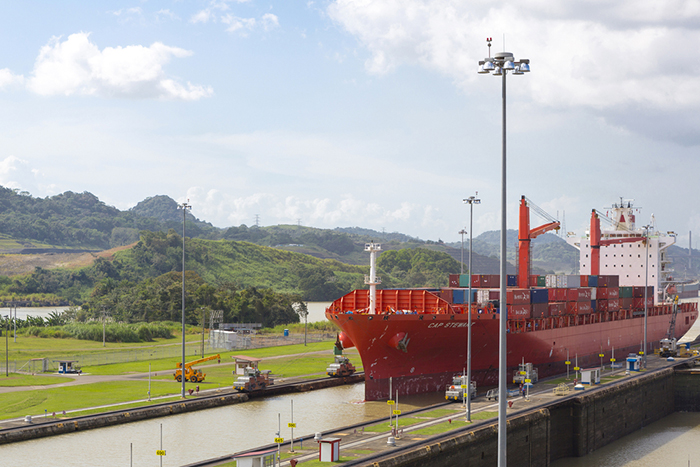Rates on the U.S. East Coast trade are falling as carriers take positions on next year’s opening of the expanded Panama Canal, and no amount of general rate increases between now and next spring will restore prices to previous highs, according to Drewry.
The London-based analyst said in its Container Insight Weekly that the differential between East Coast and West Coast rates has been narrowing, and the drift in eastbound rates in 2015 was being driven more by considerations about next year rather than wholly related to the shorter term imbalances of supply and demand or vessel utilization.
“It has often been said that East Coast rates would have to reduce considerably if more cargo was to migrate from a West Coast discharge to an East Coast delivery once the new Panama Canal was fully operational, in order to make it economically viable for importers to consider the option,” Drewry noted.
“That move in East Coast rates would now seem to be taking place. In the last seven months, the differential between USWC and USEC rates has averaged some $1,800 — the intermodal costs of draying a box from Long Beach to some of the further flung inland points do not amount to that differential.
“By the first week of October, however, the gap was fast approaching no more than $1,000, which is probably the lowest it has ever been. The carriers are therefore already beginning to dangle a large carrot in front of West Coast importers to make the switch.”
Despite vessel utilizations during the third quarter remaining around 90 percent, the eastbound spot rates have been on a downward trajectory since Chinese New Year. The fall in prices has been greater in this trade than in the Asia-WCNA corridor, Drewry said.
According to the latest reading of the Shanghai Containerized Freight Index, which can be found on JOC.com’s Market Data Hub, spot rates on the U.S. East Coast last week were 42 percent lower than during the same week last year. In fact, the SCFI rate began 2015 at $4,500 per FEU before hitting an all-time high of $5,049 in mid-February. Since then, the spot rate has plummeted.
“Quotations of $2,300 for 40-foot container spot loads between Shanghai and New York can be obtained in the market, $1,800 lower than where they were a year ago and $1,000 lower than the average weekly rate over the last seven months. One has to go back several years to find a time when USEC rates were this low,” the analyst noted.
Drewry concluded that the battle to induce more U.S. hinterland cargo to vessels plying the Asia-USEC trade would continue. “Eastbound spot rates will remain soft and the end game will only come when beneficial cargo owner rates are renegotiated next May,” it said.
